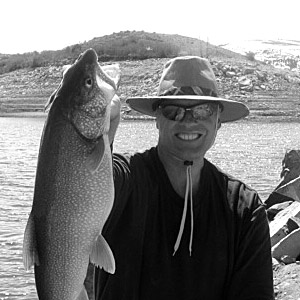Join more than 50,000 musicians who’ve gone through this video series, and discover:
– Why most musicians don’t learn to play music by ear (at least not to a significant level)
– How to transcribe a song by ear the right way (without using your instrument)
– How to transcribe all music in the same key (including major and minor songs)
– The 6 intervals you need to recognize to play by ear (hint: you don’t need to know all 12 intervals to play by ear)
– ‘Common shapes’ explained – learn to spot the common melodic patterns that most songs use.


Hi, my name’s Julian Bradley.
I’m a jazz pianist from the U.K. with a Masters Degree in music. I love teaching ear training and music theory to those with the passion to learn.
For the first 10 years of piano lessons I struggled in music. I was a shy student who couldn’t understand music theory, and I would never raise my hand in class.
It wasn’t until I learned to play music by ear that I gained a deep understanding and love for music theory. Following my breakthrough, I noticed all areas of my music practice accelerate like never before.
Why was I able to succeed at ear training?
While my classmates would learn to play every song in the key that the original song was in – I did something differently:
I would line up all of the songs I was transcribing into the same key – which happened to be C minor / Eb major.
Very quickly I learned to spot the common shapes and chord progressions that most songs use – without the distraction of changing keys.
If it wasn’t for this ‘fixed key’ approach, I know I would have continued to struggle in music theory and ear training, and eventually I would have probably given up altogether.
Having seen the life changing power of ear training in my own journey, I’ve made it my mission in life to help all musicians to develop this most essential skill, so that they can go on to fully enjoy music on a deeper level.
Whatever your instrument, whatever your musical background – I’ve made all of my ear training accessible to anyone.
You don’t need to read music, you don’t need formal training.
The One Skill Every Great Musicians Has In Common
When you look at the great musicians of all time, they come from a wide range of backgrounds.
Some could read music, some could not.
Some had formal training, some did not.
Some were child prodigies, some were not.
However there is one skill that they all have in common – without exception:
They could all play music by ear.
Beethoven, Mozart, Miles Davis, Bill Evans, Glenn Miller, Benny Goodman, Prince, Hans Zimmer, John Williams, James Brown, Pharrell Williams, etc.
All of these names either had perfect pitch, or relative pitch to the highest level. And it’s no coincidence.
Learning to play by ear is at the heart of everything you do as a musician. The better trained your ear is, the better every other skill becomes.
I know this from first hand experience.
Until age 16 I was an average music student. My music grades only ranged between B’s and C’s.
I remember the frustration I felt when composing – since I could never get my music to sound the way it did in my head.
I lacked confidence in any musical setting – piano lessons, orchestra practice, and I was scared to raise my hand in music class.
However at age 17 things started to change drastically, when I added one thing to my practice:
I began transcribing songs by ear.
At first I had no idea what I was doing – I was just trying to figure out christmas carols on my trumpet. I certainly had no special talent at it.
But as I continued to add transcribed melodies to my repertoire, my confidence grew.
I noticed the same ‘common patterns’ coming up over and over again.
I found myself narrowing down my answers to 2 or 3 likely options. And before long – just one option.
Eventually I became so confident in my answers that I didn’t need to check them at my instrument.
Being able to play any song by ear on request, was an amazing reward on its own. ‘It’s so amazing that you can do that’ is the exact phrase I’ve heard from so many friends over the years.
But the benefits didn’t stop there.
As my ear improved – so did every other musical skill.
My understanding of music theory increased – since I found myself learning just by listening to music, all the time – at coffee shops, the gym, a bar or nightclub, while watching a film, when someone’s phone rang, or when an ice-cream truck drove by. My learning was no longer confined to music lessons – and I became immersed in music all of the time.
My composition improved – I knew exactly which notes I intended to play, and could consistently write good music – every time.
My improvisation improved – I knew how notes would sound before playing them, and could translate what I heard in my head, to my instrument, in real time.
My confidence shot up. The music classroom went from a place I feared, to the place I felt most confident. I started gravitating to the music room during lunch and after school with friends.
In short – the invisible barrier that had been restricting all areas of my playing, was no longer there.
Who can learn relative pitch?
Every musician is capable of mastering relative pitch to the highest level – just as I did.
You don’t have to be a genius – I certainly wasn’t.
Relative pitch can be learnt at any age, and most of the breakthrough usually takes place in the first 6 months.
Music is just a language – we all seem to learn our native languages ok, and music is no different.
You don’t have to go to a foreign country to immerse yourself in music – it’s already being played everywhere you go. You just have to tune into it and change the way you think while listening.
Member Testimonials
Let’s hear what Musical Ear members are saying about the course and their progress:
What prevents musicians from succeeding?
Most musicians never truly breakthrough with ear training, for one reason – they don’t have guidance.
Playing by ear isn’t something that happens just because you play a lot of music, or listen to a lot of music – it’s something that has to be practiced a very specific way.
And in fact, many practice techniques are counterproductive to ear training – they undo your progress.
The truth is that most music teachers can’t play music by ear, and don’t know how to teach it.
I’ve had many music teachers in my life – only 3 of which had mastered playing by ear. These were the 3 teachers that really made a difference in my learning. They were truly world class – because they had trained their ears and reached their full musical potential.
Who Am I?
Hi, my name’s Julian Bradley. I’m a jazz pianist, composer, and music education specialist. I’ve studied music to master’s level, and taught over 60,000 musicians through my youtube channel.

I’ve enjoyed a great deal of success in music – from playing jazz piano in big bands, to writing music for professional orchestras. All of which I attribute to training my ear first – nothing else. Now I want to help you develop this skill too – and for you to reach your full musical potential.
The Musical Ear
The Musical Ear is my complete ear training course. It packs a decade of my own music learning into a concise video course.
More than 30 video lessons, lasting more than 8 hours of video footage.
I take you from complete beginner, to a master of relative pitch.
The lessons combine teaching with testing – and many real life musical examples throughout.
I black out the keyboard and test you on what you’re hearing – before walking you through the answer and my thought process.
I show you how I think when listening to music.
I show you what I listen for when transcribing a melody.
What I listen for when transcribing a chord progression.
The common patterns and what to expect from any piece of music.
Your Transformation
By the time you finish this course, you’ll be a completely different musician to when you started.
You’ll listen and think about music in a new way.
You’ll experience improvements in all areas of your playing.
And you’ll enjoy this skill for the rest of your life.
Module Breakdown
Lessons 1-16: The fundamentals. First we cover the 80% of diatonic music that stays within one key – topics include: correct practice methods, intervals, tension notes, tonal colors, the pentatonic shape, transcribing a chord progression – and more.
Lessons 17 – 28: Compositional techniques. Here we cover exotic sounds and ‘out of key techniques’ – including: chord inversion, chord extensions, pedal notes, a 3 part series on modulation – and more.
Lessons 29 – 34: Transcribing Jazz. Jazz features all the concepts covered previously in the course – but adds some additional techniques – including: cycle of fifths chord progressions, major and minor ii – V – I’s, bassline patterns, more modulation, jazz melody, call & response practice, new tonal colors – and more.
Lessons 35 – onwards (coming soon): Finally I cover some of the remaining 5% of techniques not yet discussed – including: modal music, playing in all 12 keys, making an interesting arrangement / cover, as well as ‘transcribing case studies’, where I walk you through my thought process on real life songs.
Formal Training in Music
The information in this course will benefit you in 2 ways:
1. Ear training – you’ll be able to transcribe and understand what you’re hearing.
2. Your composition / playing – you’ll have a vast palette of sounds to choose from in your playing.
It’s fair to say that this is 2 courses in one:
It’s a complete formal training in music theory, and a complete formal training in ear training. Akin to a university education in both.
Hitting a Plateau
It’s common in music to hit a plateau. Every musician experiences it at some point.
You can feel when you’re not making progress – just maintaining the same level you’ve been at for the last year or more.
But some musicians stay at that plateau their whole lives – while others move past them.
Among my students, the biggest cause of musical plateaus – is lack of ear training.
Many musicians try to go straight into jazz, straight into composition, or straight into music producing – without working on their ear first. But ear training is the most essential stage in every musician’s development – and it cannot be skipped.
So what’s required?
All it takes is 2 months of transcribing songs by ear to make ‘active listening’ a habit for life. Once this new way of listening becomes a habit, you’ll notice it kicking into action every time you hear music played – automatically. It becomes natural and unconsious.
Over time, your curiosity drives you to figure out new sounds, and you gradually fill in any gaps – until you reach mastery.
And – transcribing music by ear is FUN! It’s my favorite thing to practice. The time I’ve spent training my ear has been the most special time in my musical development. I would love to do it all again.
Who is this course for?
The Musical Ear is for adult musicians (18+) with at least 5 years playing experience.
This course is designed for all instruments. I demonstrate all concepts through the piano. And reading music is NOT necessary.
Prerequisites
Before taking this course, you should be familiar with the following music theory concepts:
- Notes on the piano keyboard.
- Major scale and the minor scale (their interval patterns).
- Major chords and minor chords.
- Knowledge of interval labeling – half- step, whole-step, minor 3rd, major 3rd, 4th, 5th, etc.
- Access to a piano is recommended for some practice exercises.
Value & Pricing
The Musical Ear is a new course, and is still in it’s introductory phase. The price will increase as I finish adding the remaining lessons over the next few months.
There are 2 membership options:
– 1 Year Membership: Introductory discount price = $249 (will soon become $399).
– Lifetime Membership: Introductory discount price = $349 (will soon become $499 – and may stop being offered in future).
Both options give you complete access to the course from day one. The only difference is how long each membership lasts – one year = one year, lifetime = lifetime.
Risk Free
I understand that you might be wondering if this course will be right for you. It’s not just a $20 book – it’s a full on course, and requires some time commitment too.
That’s why I offer a 90 day money back guarantee. I want you try the course, and if it’s not right for you – just email me, and I’ll be very happy to refund your complete purchase.
I mean it – I genuinely made this course to help musicians reach their full musical potential. And I’d rather you watch the entire course, and ask for a refund, than not watch it at all.
What Members are Saying
“Wow, played all videos and feel like I have taken a 4 year Berkley in 5 hours. A wonderful thesis in music theory and practical. I think your presentation hits on all cylinders and will be a wonderful tool for students. Way ahead of your original works which in themselves were excellent.
[…]
I’m just up to your Transcribing Jazz Lesson part 3 and what a wonderful piece of work that is. The way you have created your Ear Training course is pure genius and I realize I need to go right back to the beginning and slowly work through it. Not just from an ear training standpoint but there is so much theory in it, it is a gold mine of information and presented in a way I enjoy – factual and to the point without wasting time.”
Ray Huckell, Toronto, Canada.
“These new tutorials are outstanding Julian! Especially for pianists like me who lack the fundamentals and have an insatiable passion to improve ear training. You so very beautifully explain in simplest terms the spectral relationships between melody, harmony and bass within an octave. I’ve spent a lifetime sitting in front of the piano trying to understand it and these new tutorials give us all a much greater shortcut to do just that!
[…]
I realized as we drove yesterday to go fishing and listened to pop radio that I was using my ear in a new and different way, to understand and study intervals. I feel had I been taught this particular method I’d have been conscious of my abilities at a much earlier age. It makes me smile to finally realize at my age I can do this. It was you who awakened me to the logic and process.”John Riger, Aspen, Colorado.
“Hey Julian! Just checked your ear training playlist and I’ve listened to it already for the 8th time, and I love it!!! Great examples and I love your melodies. For me, and I can only speak for me, the content is clear and on point. I really like the way you understand music, for me you are the best teacher!
I started playing keys about 1.5 half year ago. Since then I’ve watched so many videos about chord functions, relative major minor stuff etc, but since hearing your ear training I’ve got a different view on chords and intervals in a very positive way. I used to struggle with recognizing chords and used to feel overwhelmed, but you’ve given me the tools which makes it a lot easier to transcribe chords.
[…]
Since I heard your ear training material I listen to music in a different way – really thanks for that, it makes me greedy for more! Thanks again, and I’m waiting like a child for christmas for more new stuff!!!”Adrian Ryzka, Vienna, Austria.


